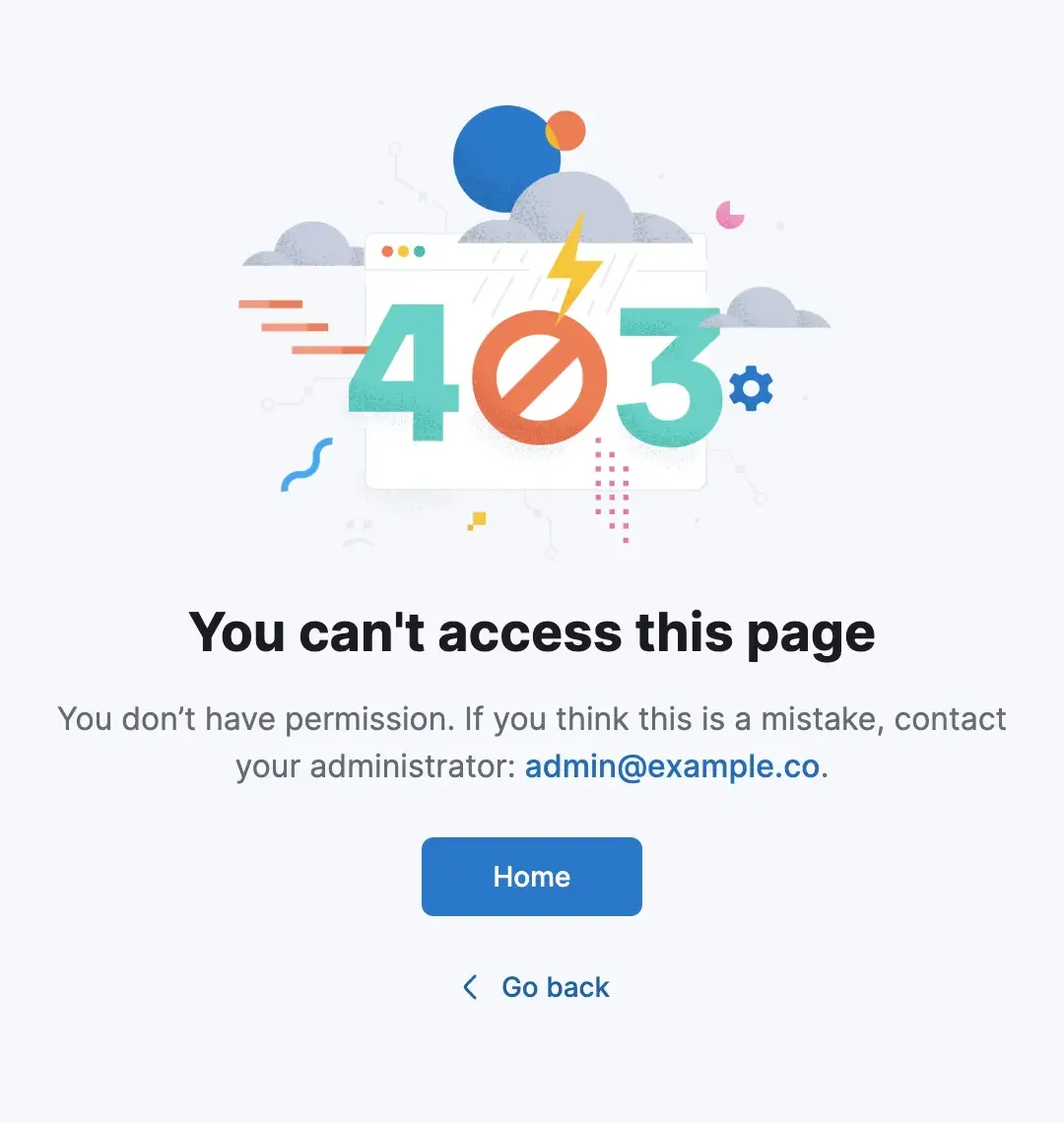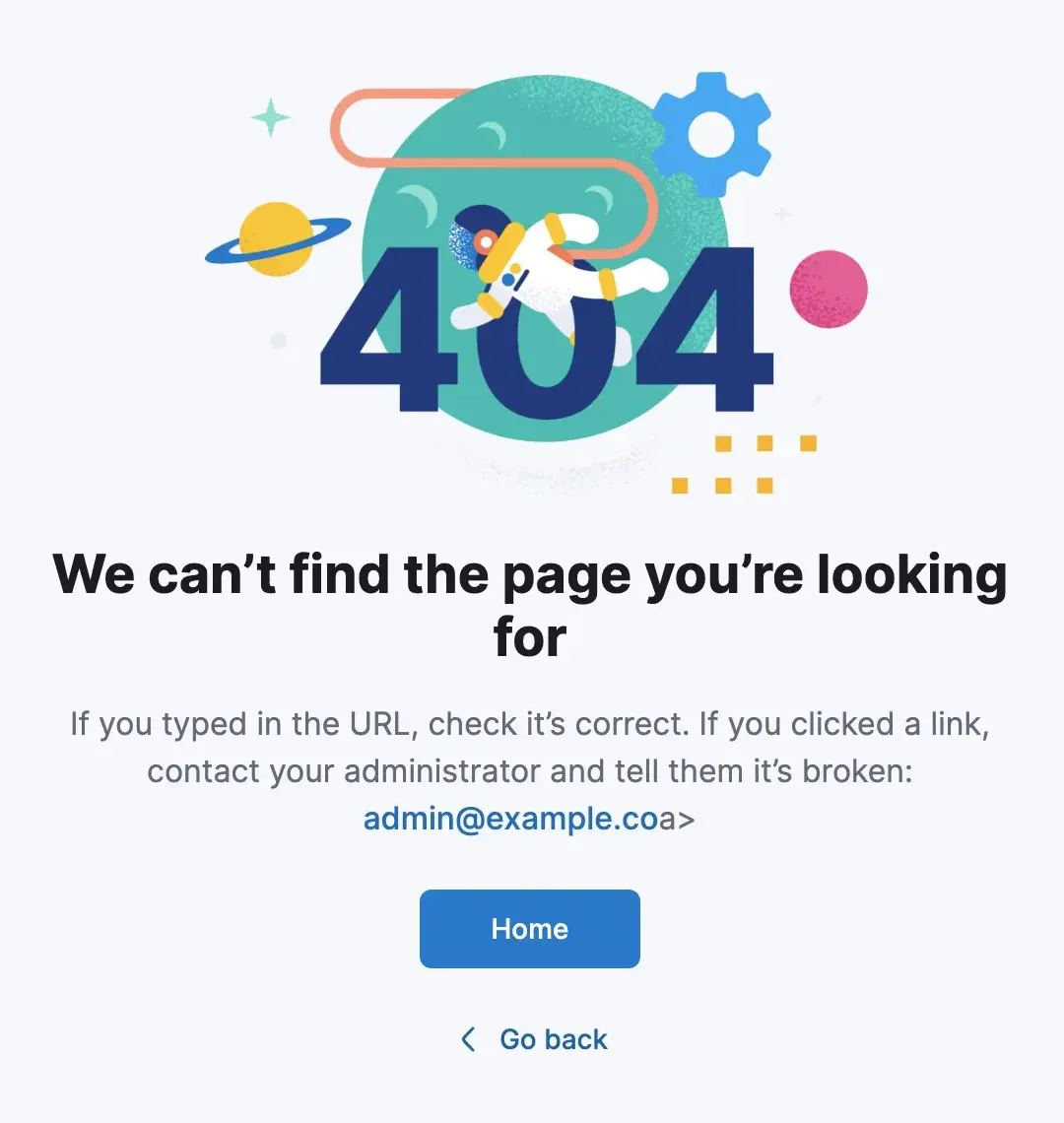Error page
Use an error page when it is not possible to show the user the page they expected to see.
- 403 Example
- 404 Example


When to use this pattern
Use an error page when it is not possible to show the user the page they expected to see. For example:
403: user does not have permission404: cannot find page or resource410: page or resource has been deleted
We have created a list of
example error messages for common error codes.When not to use this pattern
Error pages are a hard stop in the user's journey. They can be jarring and annoying to encounter.
Do not use an error page to display a warning about an unrelated error, instead use the error warning pattern.
Do not use an error page for validating information the user has entered, instead use the validation errors pattern.
Do not use an error page when you're able to still show the page the user was expecting, instead use the error banner pattern.
How it works
Use the EuiEmptyPrompt component to build your error pages.
Redirect the user to your error page in situations where an error occurs and the expected page can't be shown.
Help improve this pattern
To help make sure that this page is useful, relevant and up to date, you can join our #ux‑wg‑patterns discussions on Slack.